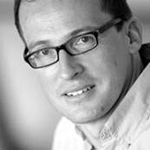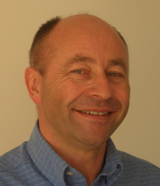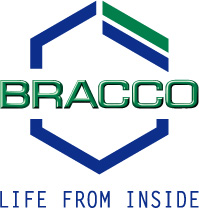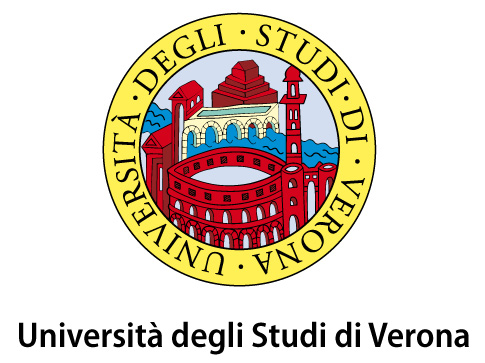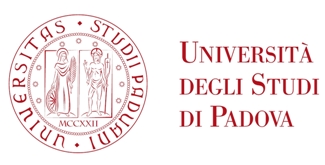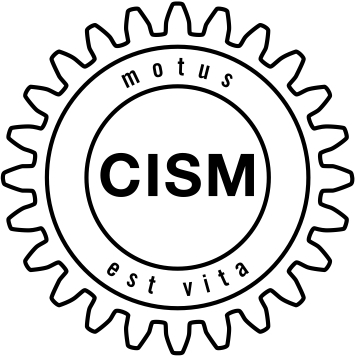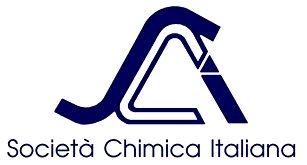Applications in Biology and medicine
Kenneth N. Raymond
University of California, Berkeley, USA
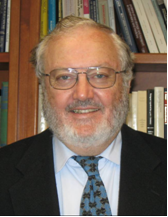
Professor Kenneth N. Raymond (1964 B.A. in chemistry, Reed College; 1968 Ph.D., Northwestern University) began his faculty appointment at the University of California at Berkeley on July 1, 1967. There he has remained, appointed Chancellor’s Professor in 2006. He has served as Vice Chair of the Berkeley Chemistry Department (1982-1984 and 1999-2000) and Chair (1993-1996). He has received: the Ernest O. Lawrence Award of the Department of Energy (1984); a Humboldt Research Award for Senior U.S. Scientists (1991); the American Chemical Society Alfred Bader Award in Bioinorganic or Bioorganic Chemistry (1994); the Basolo Medal at Northwestern University and the Max-Planck-Institut für Strahlenchemie “Frontiers in Biological Chemistry” award (1997); the Reed College Howard Vollum Award for Distinguished Accomplishment in Science and Technology (2002); the Kosolapoff Award of the Auburn section of the ACS (2004); the Izatt-Christensen Award in Macrocyclic Chemistry (2005); and the ACS Award in Inorganic Chemistry (2008). He was elected to the National Academy of Sciences in 1997 and the American Academy of Arts and Sciences in 2001. In addition to his academic appointment on the University of California campus, he is a cofounder (2001) of Lumiphore Inc. and Faculty Senior Scientist of the Chemical Sciences Division, Lawrence Berkeley National Laboratory. Professor Raymond is the author of 18 patents and 522 research publications.
Xiaogang Liu
University of Singapore, Singapore
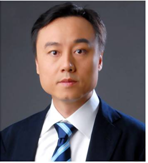
Dr. Xiaogang Liu earned his BS degree (1996) in Chemical Engineering from Beijing Technology and Business University, China. He received his MS degree (1999) in Chemistry from East Carolina University in Greenville, North Carolina under the direction of Prof. John Sibert and completed his PhD (2004) in Chemistry at Northwestern University in Evanston, Illinois under the supervision of Prof. Chad Mirkin. In the same year he became a postdoctoral fellow in the group of Prof. Francesco Stellacci at MIT. He joined the faculty of the National University of Singapore in 2006. He holds a joint appointment with the Institute of Materials Research and Engineering, Agency for Science, Technology and Research. His interests include nanomaterials synthesis, supramolecular chemistry, and surface science for catalysis, sensors and biomedical applications.
Catalysis, energy and fuel cells
Tatsumi Ishihara
Kyushu University, Japan
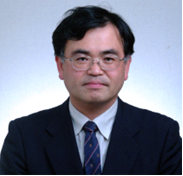
Tatsumi Ishihara is currently, Professor in Kyushu University. He received Dr. Eng. degree in 1989 from Kyushu University. He joined the Graduate School of Engineering Science in Kyushu University in 1986 and in 1988, he moved to the Faculty of Engineering in Oita University as a associate professor. In 2003, he moved to Faculty of Engineering in Kyushu University as full professor. Main research interests are covered oxide ion conductor and its application for fuel cells and catalyst chemistry.
Frederic Meunier received a joined PhD in Physical-Chemistry from the University of Strasbourg (France) and Limerick (Irlande) in 1995. He is currently a CNRS researcher based in Caen (France), before moving to the IRCELyon catalysis center in Villeurbanne (France) from September 2012. His main interests regard the investigation of the mechanisms of heterogeneous catalytic reactions, in particular by using in situ and operando FTIR spectroscopy, themes that were initiated with Prof Julian Ross during his post-doctoral stay in Limerick from 1996 until 1999. He carried out a von Humboldt fellowship in Munich with Prof Johannes Lercher from 1999-2000, where he studied acid-base catalysis and diffusion in zeolites. He was previously senior lecturer at Queen’s University Belfast (United Kingdom) over 2000-2007, period during which he researched in the CenTACat group led by Prof Robbie Burch on hydrogen production and environmental catalysis. He is a member of the editorial board of Catalysis Today, Applied Catalysis B: environmental and The Scientific World Journal. He was awarded the 2009 prize of the Catalysis Division of the French Chemical Society.
Coordination, organic and organometallic chemistry
Dr. François NIEF obtained his Ph. D. in 1981 from the "Université Pierre et Marie Curie" in Paris, France. After a postdoc in 1982-1983 with Prof. Charles P. Casey at the University of Wisconsin, Madison, USA, he joined the French CNRS as "Chargé de Recherche" (Research Associate) in 1983, and was promoted to "Directeur de Recherche" (Research Director) in 2003. Since 2010 he has been head of the "Laboratoire Hétéroéléments et Coordination" in the Department of Chemistry of the Ecole Polytechnique in Palaiseau, France. His main research interests are the chemistry of lowvalent lanthanide complexes and industrial applications of organolanthanide complexes.
Claude Piguet
University of Geneva, Swizerland

Claude Piguet earned a PhD degree in 1989 in the field of biomimetic copper-dioxygen complexes. After postdoctoral periods in the groups of professors J.-M. Lehn, A. F. Williams, and J.-C. G. Bünzli, he initiated research projects in the field of lanthanide supramolecular chemistry. He received the Werner Medal of the New Swiss Chemical Society (1995) and was appointed in as a full professor of inorganic chemistry at the University of Geneva (1999). He has co-authored more than 160 scientific articles addressing various aspects of basic chemistry and physics. In 2009, he was awarded the Lecoq de Boisbaudran Senior Award from the European Rare Earth Society.
Magnetism
Liviu Chibotaru
University of Leuven, Belgium

Liviu Chibotaru is associate professor at the University of Leuven since 2004. He received his Ph. D. in theoretical physics in the Laboratory of Quantum Chemistry of the Academy of Sciences of Moldova in Chisinau working on Jahn-Teller effect in polynuclear complexes under the supervision of Isaac Bersuker. His research interests were focused on the electronic properties of alkali doped fullerides and carbon nanostructures, molecular magnetism and vortex matter in mesoscopic superconductors. His current interests include magnetic anisotropy effects in lanthanide and transition metal complexes, superconductivity, molecular electronics, electron correlation and vibronic interactions in extended systems.
Michel Kenzelmann
Paul Scherrer Institut, Switzerland
Michel Kenzelmann heads the Laboratory for Developments and Methods at the Paul Scherrer Institut, in Switzerland. He received his D.Phil. from Oxford University in 2001. He had a postdoctoral position shared by Johns Hopkins University and NIST, Gaithersburg, from 2001 and 2004, and held a professor fellowship of the Swiss National Science Foundation at ETH Zürich from 2004 to 2008. His research interests focus on materials with strong magnetic fluctuations, such as low-dimensional and frustrated magnets, multiferroics, and unconventional heavy-fermion superconductors.
Solid state chemistry and physics, intermetallic compounds, materials
Svilen Bobev
University of Delaware, USA
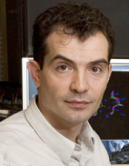
Svilen Bobev received his undergraduate education at the University of Sofia, Bulgaria. He then moved to the United States to get a PhD in Inorganic Chemistry at the University of Notre Dame. In 2004, Dr. Bobev began his independent career at the Department of Chemistry and Biochemistry, University of Delaware, where currently he is an associate professor. As a faculty member, Prof. Bobev has received many professional awards including the Margaret C. Etter Early Career Award of the American Crystallographic Association (2009) and the Exxon Mobil Faculty Fellowship of the American Chemical Society (2009). His research interests cover important issues related to the understanding of the relationships among the composition, structure, and electronic structure in complex intermetallic compounds and their properties. He has co-authored over 115 publications and given more than 30 lectures and invited presentations.
Julia Chan
Louisiana State University, USA
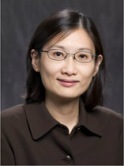
Professor Julia Chan (1993 B.S. in Chemistry, Baylor University; 1998, Ph.D., University of California at Davis) began her faculty appointment at Louisiana State University in Fall 2000, after spending two years as a National Research Council Postdoctoral Associate at the National Institute of Standards and Technology. Her research interests involve synthesis of materials that exhibit metal-to-insulator transitions, mixed valence, highly correlated electronic systems, superconductivity, and materials for energy conversion. Efforts are placed on the crystal growth, structures, and properties of new materials. Prof. Chan has published over 100 papers and given ~100 invited talks. Prof. Chan’s awards include NSF Career Award, American Crystallographic Association Margaret C. Etter Early Career Award, Baylor University Outstanding Alumni Award, Alfred P. Sloan Research Fellowship, Iota Sigma Pi Agnes Fay Morgan Award, American Chemical Society Exxon Mobil Faculty Fellowship in Solid State Chemistry and one of 12 Profiled in 2002 C&E News series on “Women in Chemistry”, highlighting women making an impact in the chemical sciences. She is currently the editor of Journal of Alloys and Compounds and serving on the Editorial Board for Chemistry of Materials.
Spectroscopy and theory
Ricardo Luiz Longo
Universidade Federal de Pernambuco, Brasil
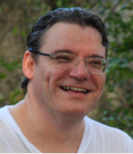
Ricardo L. Longo has been a professor at dQF-UFPE since 1994 and has supervised 12 PhD and 15 MSc. He has served in several committees of Brazilian agencies and as a former associate editor of J. Braz. Chem. Soc. His research interests are diverse and most recently involve structure, catalysis and spectroscopy of lanthanide compounds, chemical bonding, dynamics and mechanisms of chemical reactions, properties of solutions and mixtures, computer simulation of adsorption, and development of new theoretical and computational methods.
Lidia Smentek
Vanderbilt University, Nashville, USA
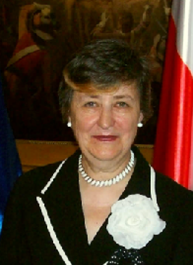
Prof. dr hab. Lidia Smentek is a professor of physics and chemistry; retired after 40 years of service from her Alma Mater, Nicolaus Copernicus University in Toruń, Poland, she is a professor at Vanderbilt University in Nashville, U. S. A., holding this post since 1994. In the main stream of her scientific career she devoted her research to the spectroscopy of lanthanides extending successfully the famous Judd-Ofelt theory to the third order, and formulating its relativistic version via a fruitful collaboration with the late Brian G. Wybourne. Her purely theoretical investigations of the spectroscopic properties of f-electron systems, based on ab initio calculations, have been extended over the last decade by novel research on vast applications of luminescence of the lanthanide materials, including detection and cure of cancer. In the most recent research she works on correlation of structural and spectroscopic properties of super small lanthanide nanomaterials. She is the author of 150 publications and three books.
Optical materials (lasers, telecommunication, lightings, sensors, photovoltaics……)
Jean-Luc Adam received a PhD degree in chemistry from the University of Rennes, France, in 1983. After a one-year postdoctoral appointment at Oklahoma State University, he joined the Centre National de la Recherche Scientifique (CNRS) in France in 1985. Since then, his research has been devoted essentially to the chemistry of non-oxide glasses and to the spectroscopy of optically active ions, including research on optical fibers and waveguides. In 1989, he was a research associate at IBM-Almaden Research Center (San Jose, USA), conducting research on glasses for optical memories. Presently, he is a senior scientist at CNRS and Director of the Institute of Chemical Sciences at the University of Rennes. He is also Joint-Head of the International Laboratory on Materials and Optics with the University of Arizona in Tucson. He has authored or co-authored more than 190 papers and book chapters and delivered 60 invited lectures at international conferences.
Guenter Huber
Universität Hamburg, Germany

Guenter Huber received his Ph.D. degree in physics from the University of Stuttgart/Germany (1975). He was research staff member of the Max-Planck-Institute for Solid-State Research in Stuttgart/Germany, Assistant Professor at the Institute of Applied Physics of Hamburg University (1976). Since 1982 he is Professor of Physics at the University of Hamburg, where he became Director of the newly established Institute of Laser Physics at Hamburg University (1991), Vice Dean (2000), and Dean of the Faculty of Physics at Hamburg University (2003). Since 2008 he is board member of the Council of Hamburg University. His research activities in experimental laser physics are focused on the development and fundamental characterisation of new transition metal and rare earth ion doped solid-state lasers, including crystal growth of oxides and fluorides, preparation of dielectric waveguides by pulsed laser deposition and micro-structuring of bulk crystals with ultrashort laser pulses, optical spectroscopy (near IR, VIS, UV, VUV, X-ray), new diode pumped lasers for various applications in the near IR and visible spectral region, up-conversion lasers, as well as non-linear frequency conversion of solid-state lasers. The results of these activities have been documented in more than 230 journal papers.
Jorma Hölsä
University of Turku, Finland
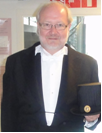
Prof. Hölsä graduated as Dr. Sci. in Technology in 1983 from the Department of Chemical Engineering at the Helsinki University of Technology (TKK, now a part of the Aalto University). Since 1992, he has been the Professor of Inorganic Chemistry at the Department of Chemistry at the University of Turku and currently a Visiting Professor at the Instituto de Química, Universidade de São Paulo, São Paulo-SP, Brazil. Prof. Hölsä has a 30+ years’ experience on the spectroscopy and luminescence of (nanocrystalline) inorganic phosphor materials based mainly on the rare earths, in addition to different fields of conventional Inorganic Chemistry. The results of the active research group have been published in 200+ papers in peer reviewed international journals and in 250+ presentations in international meetings and conferences. He has co-organized several international conferences and is serving as a frequent referee for several international journals. He is a member of e.g. the steering committee of International Conference on Luminescence (ICL) and the International Centre for Diffraction Data (ICDD). His present fields of interest include the IR-to-vis up-conversion luminescence and persistent luminescence of defects containing materials investigated by using a variety of different techniques in extensive international co-operation. Especially, the focus is on understanding the complex origin of the latter phenomenon.
Solution chemistry, extraction,separations
Isabelle Billard has been first studying the luminescence properties of actinides and lanthanides in highly concentrated aqueous solutions mimicking those in use in the nuclear fuel reprocessing. She is now studying solvation, complexation and extraction of actinides and lanthanides in ionic liquids. She is extending her interest to the extraction of other various (precious) metallic ions in ionic liquids.
Josef Hamacek
University of Geneva, Switzerland

Josef Hamacek received his PhD from Masaryk University in Brno working on the electrophoretic separation of different analytes and chemical equilibria. He pursued his formation as a Marie Curie postdoctoral fellow at the University of Strasbourg by studying thermodynamics and kinetics of supramolecular systems. In 2003 he joined the group of Prof. Claude Piguet at the University of Geneva as a post-doctoral co-worker and participated on the development of thermodynamic models. In 2006 he became lecturer and group leader at the University of Geneva. His present research interests are focused on designing 3D polynuclear lanthanide complexes and their application in bioanalytics and medical imaging.
Resources, recovery and recycling
Nicolas Barthel
Rhodia, France
Nicolas BARTHEL is R&D Laboratory Manager and R&D Recycling projects leader at Rhodia Rare Earth Systems, a company providing rare-earth based solution to automotive (exhaust gas treatment), lighting and polishing industries. He received his Engineering degree in chemistry from the Institut de la Matière et du Rayonnement in 1995 and his PhD in chemical catalysis from the University of Montpellier in 1999.
He started his carreer at Axens where he was pilot plant manager, responsible for the development of shaping alumina based catalysts for hydroprocessing.
He joined Rhodia R&D laboratory in La Rochelle (France) in 2006 as pilot plant manager and R&D process Engineer, and worked on various projects dedicated to the development of rare earth based materials. He became the La Rochelle R&D laboratory manager in 2009 and is now also leading the Rhodia Rare Earth Systems R&D recycling projects.
Yasuhiro Kato
University of Tokyo, Japan
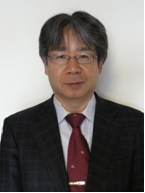
Yasuhiro Kato received Dr. Sci. degree in geology from the University of Tokyo in 1990. After a research fellow of Japan Society for the Promotion of Science, he moved to the Faculty of Science in Yamaguchi University as an assistant professor in 1991, and then to the Faculty of Engineering in the University of Tokyo as an associate professor in 2000. During this period, he was a visiting scientist at Harvard University in 1997 and at University of Cambridge in 1999. He is currently Professor of Frontier Research Center for Energy and Resources at the University of Tokyo. His research interests cover important subjects related to the exploration of mineral resources for rare-earth elements, various precious and base metals, the decoding of global environmental changes based on geochemical data of sediments and sedimentary rocks, and the underground disposal of carbon dioxide.
Chunsheng Liao
Peking University, China

Prof Chunsheng Liao obtained his Ph.D degree in inorganic chemistry at Peking University in 1996, and now is research professor of State Key Laboratory of Rare Earth Materials Chemistry and Applications in Peking University, while he currently holds general manager of Minmetals (Beijing) Research Institute of RE Co., Ltd. He has focused his research interests on rare earth extraction separation since 1989 when he was a Ph.D graduate student. He served as a leader to carry on some research subjects such as key scientific projects during the Eighth Five-Year Plan and “863 Program”. His current research interests also cover green separation of rare earths and recycling of rare earth resources. He received the special government allowance in 1998, the second prize of "Science and Technology Advancement” awarded by the Ministry of Education in 1998 and the second prize of "Science and Technology Advancement” awarded by the state in 1999


